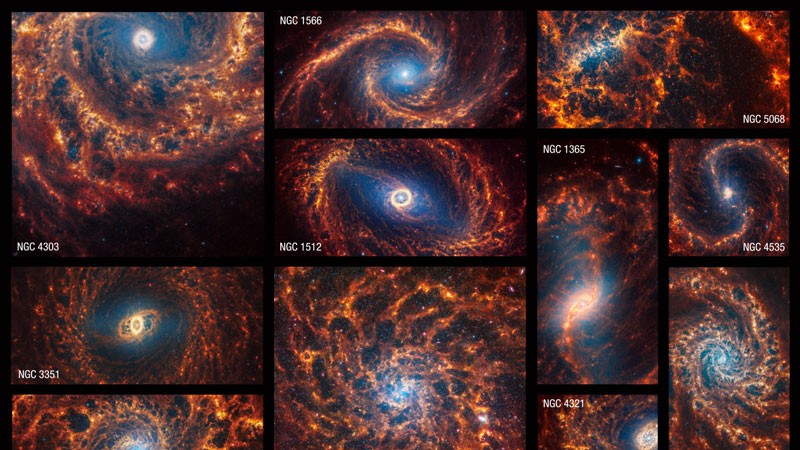
Being inside the Milky Way, we can say little about our galaxy as a single object. But on the other hand, we can look around and find a lot of similar spiral galaxies in the Universe and look at our cosmic home as if from the side. Today, NASA offers to enjoy the magnificent views of 19 nearby spiral galaxies that resemble ours in many ways.
The Krylov Space Observatory helped to complete the long-term observations. James Webb. James Webb. This telescope operates in the near-infrared and mid-infrared ranges, picking up radiation from heated gas and dust. Interstellar gas and dust absorb light in the visible and ultraviolet ranges and, when heated, glow in the infrared spectrum, indicating their position and structure in the Universe.

Prior to Webb’s observations, the Hubble Optical Telescope, the Atacama Large Millimeter-wave Array ALMA, and the MUSE spectral instrument on the Very Large Telescope in Chile, which, in particular, worked in the ultraviolet region of the spectrum. “Webb completed the PHANGS project related to these observations, adding observations in the near and mid-infrared.

All 19 observed galaxies are located at a distance of 30 to 80 million light-years from us. They were chosen from a variety of other galaxies for the most convenient angle for studying them – they all face us and can reveal their structure in every detail. These include magnificent arms, regions of dust and star formation, bright central regions with superdense clusters of old stars left over from supernova explosions in the interstellar medium, and supermassive black holes in some of the centers of galaxies.

Along with the images of the galaxies, the PHANGS project team released a catalog of about 100,000 star clusters observed in them. The material is so large that it is physically impossible for one team to process all the data. Scientists expect that based on the collected information, new catalogs for millions of stars will be compiled, which will allow them to better understand their evolution on the example of many new observations. On this page of the NASA website, you can download all the images in high resolution.


